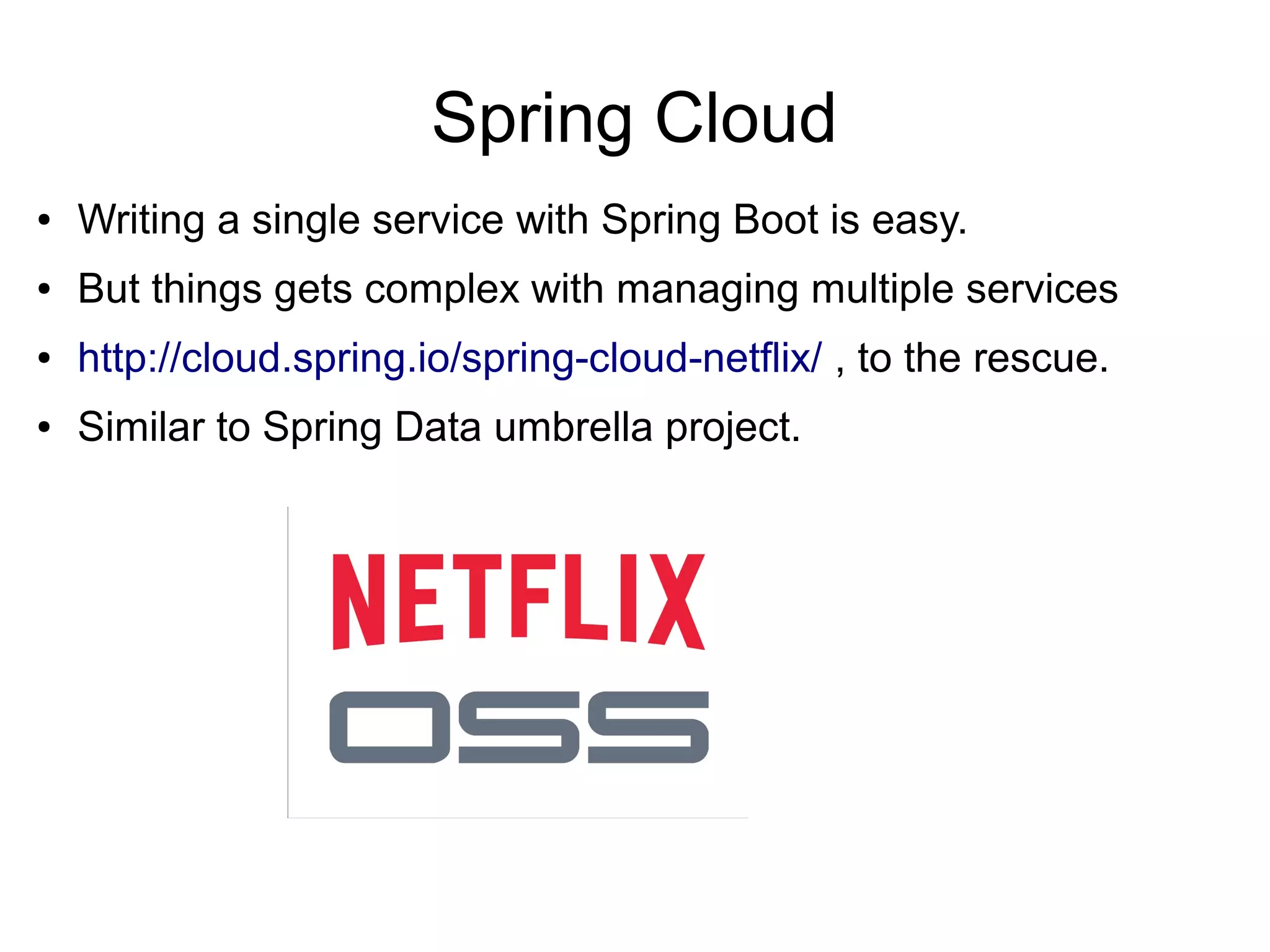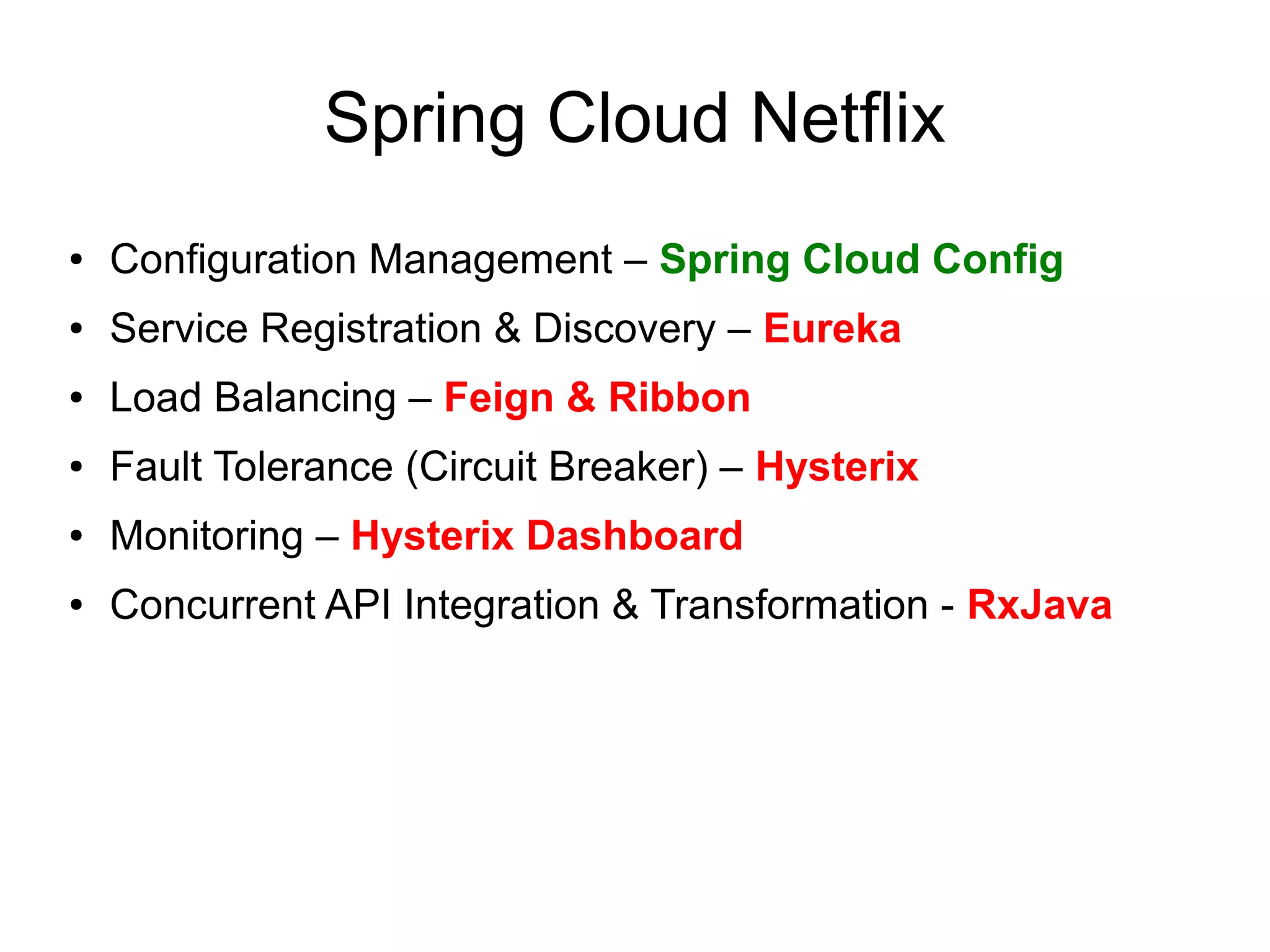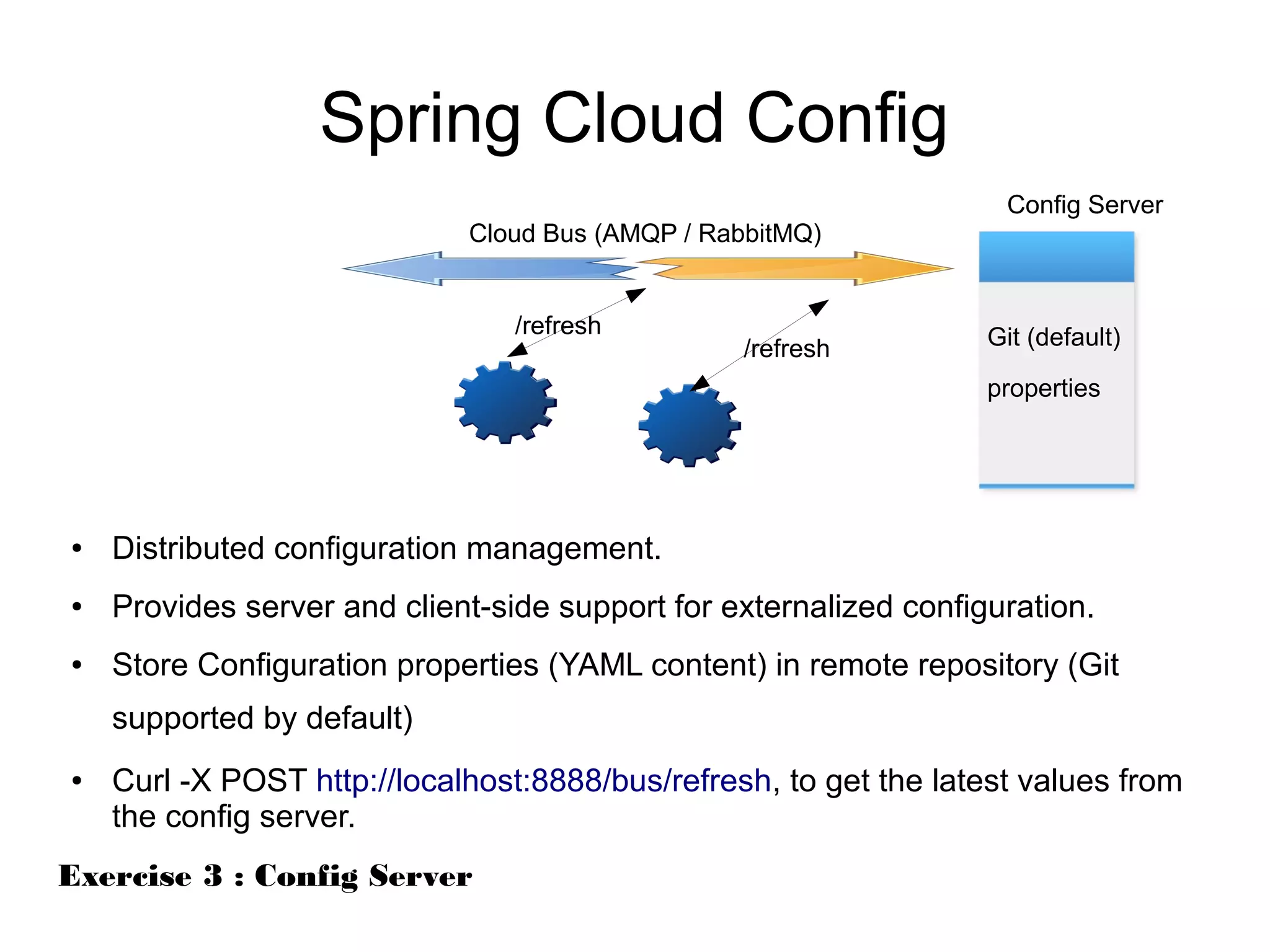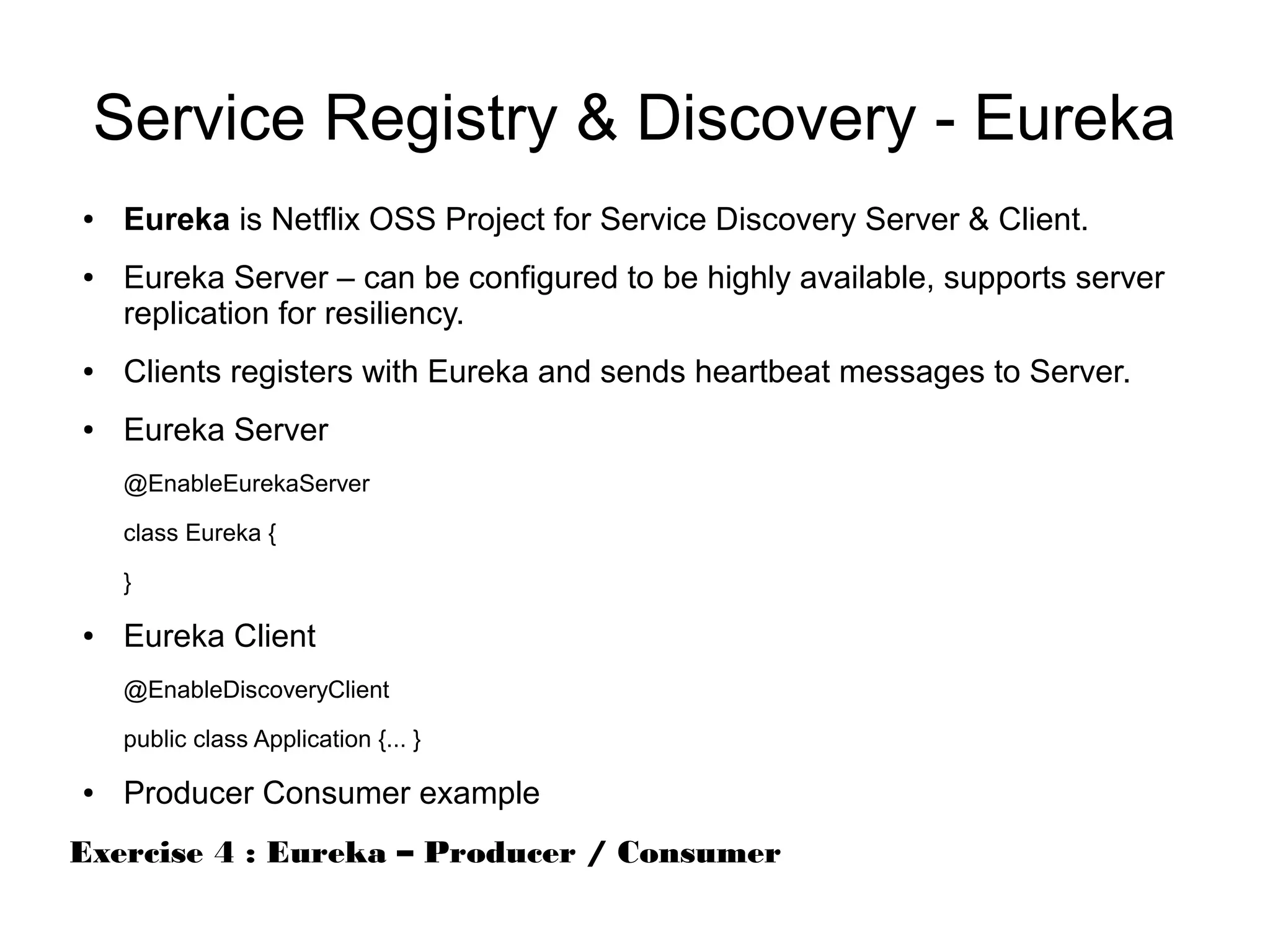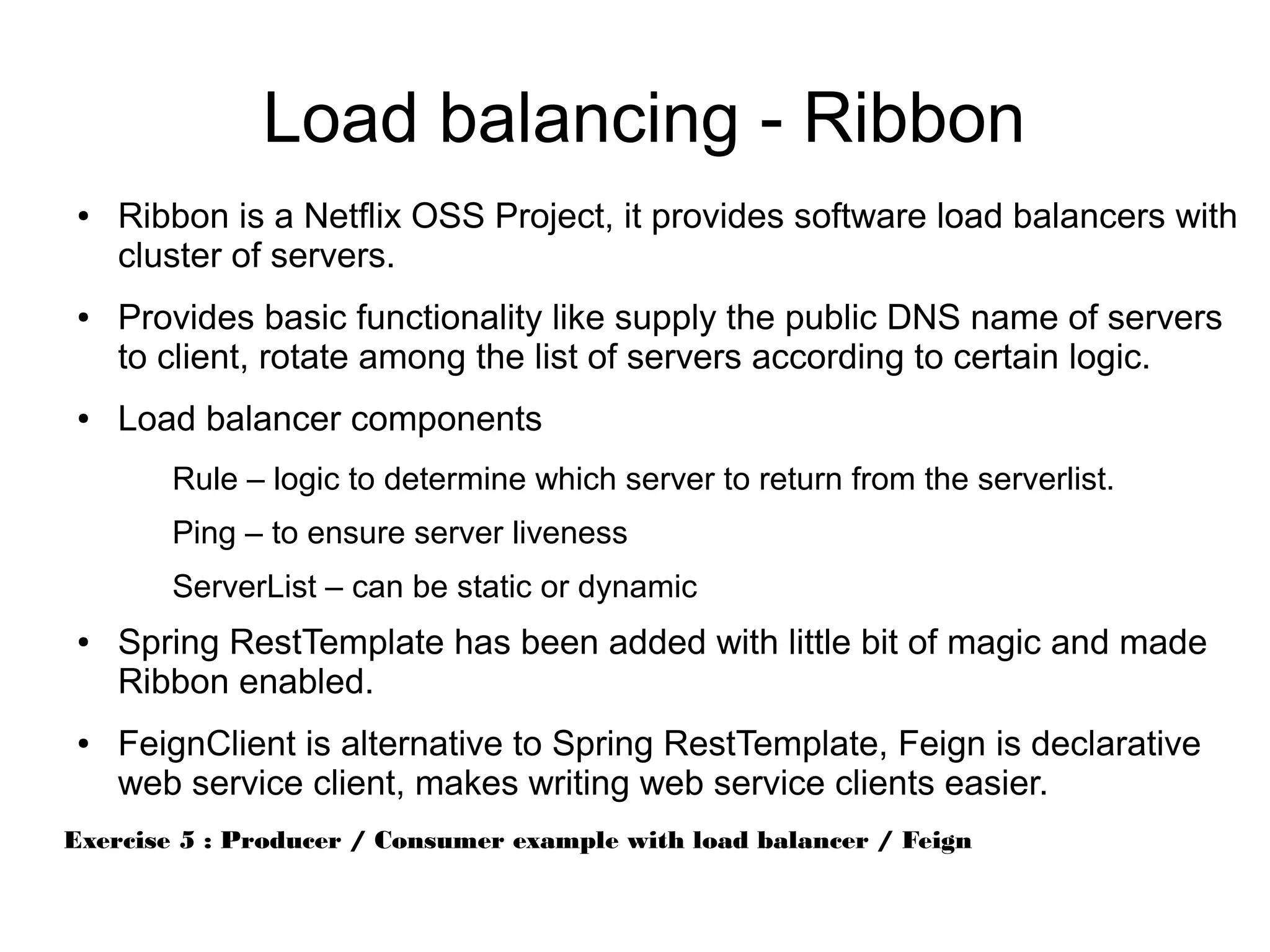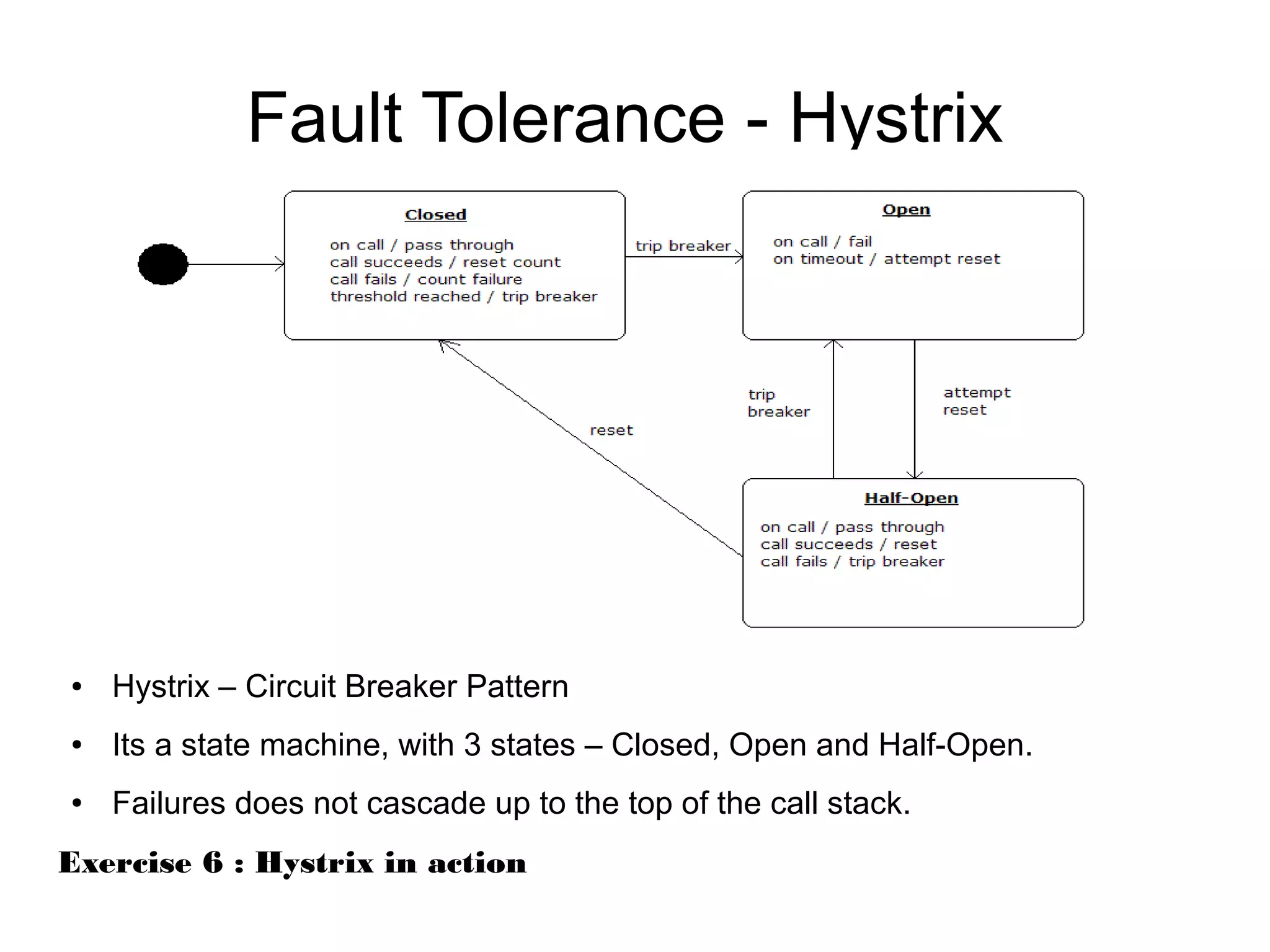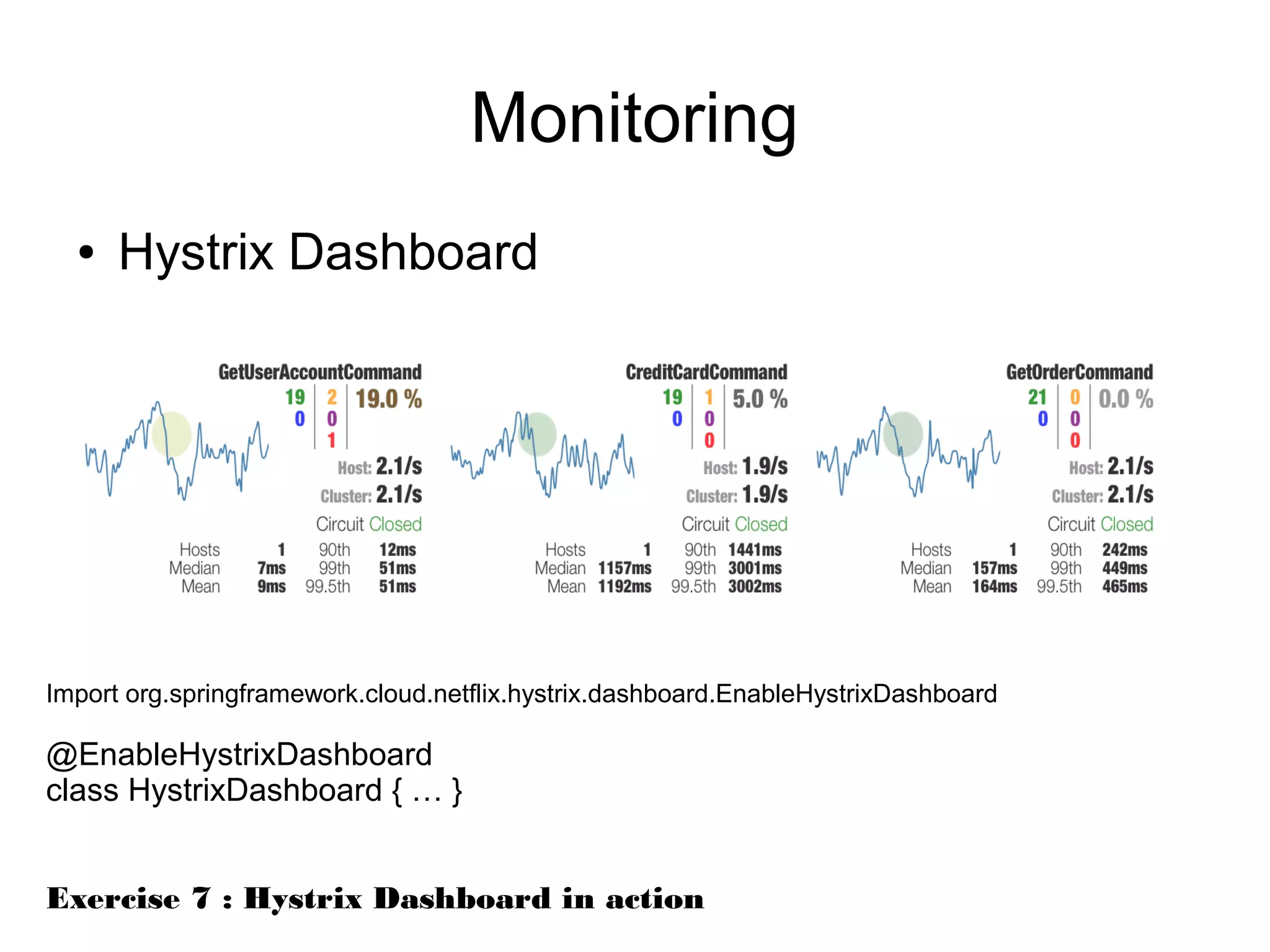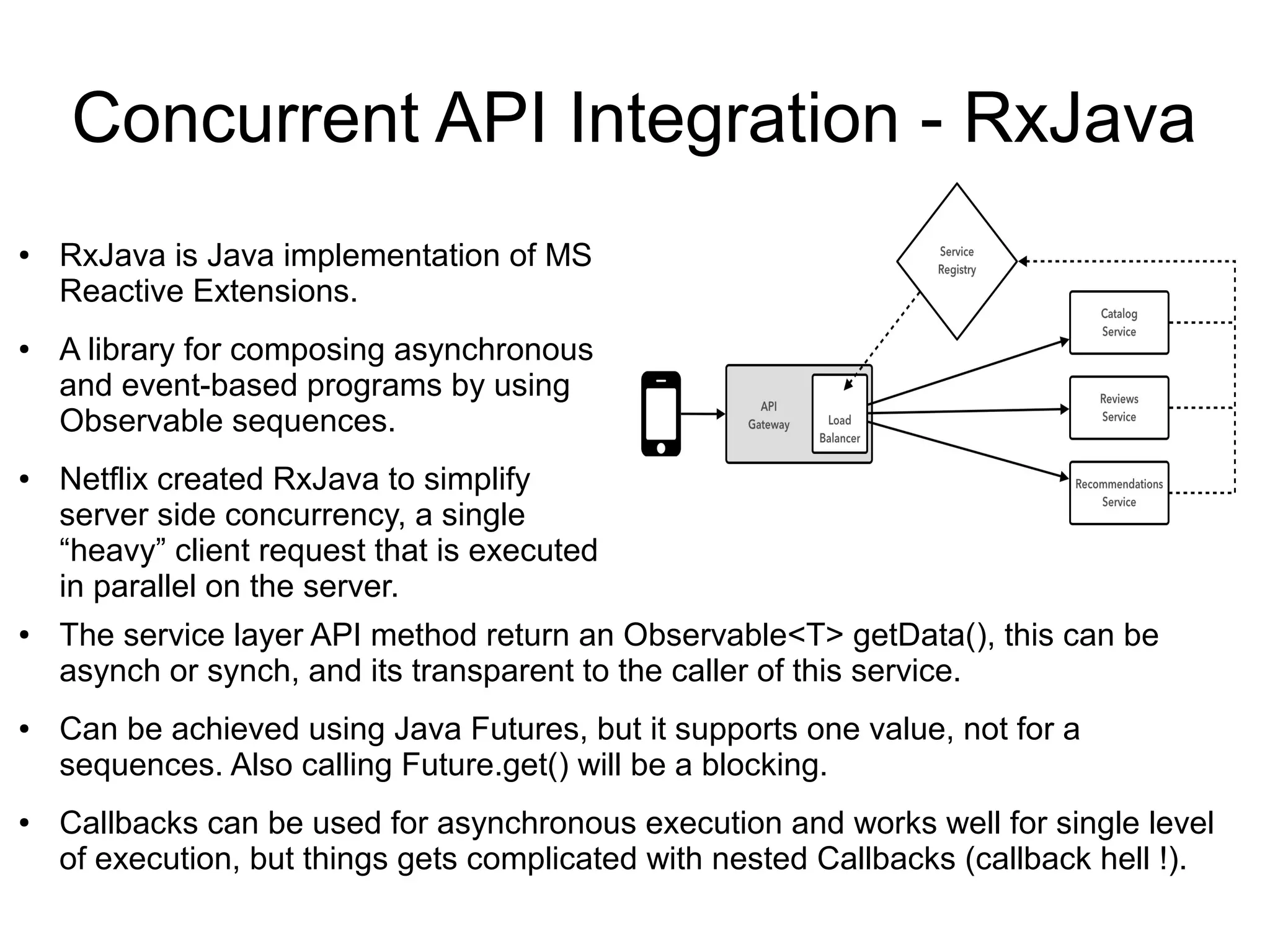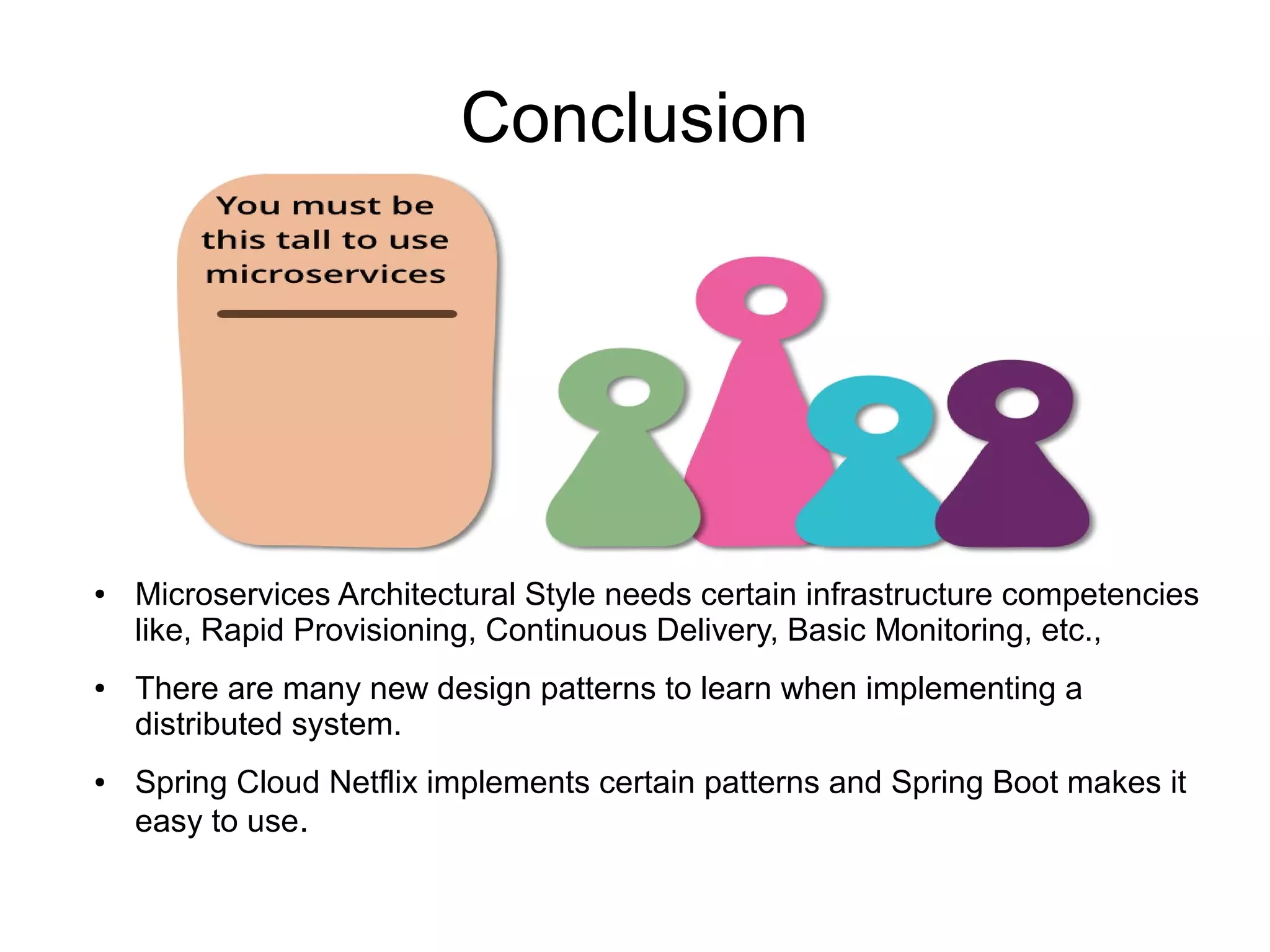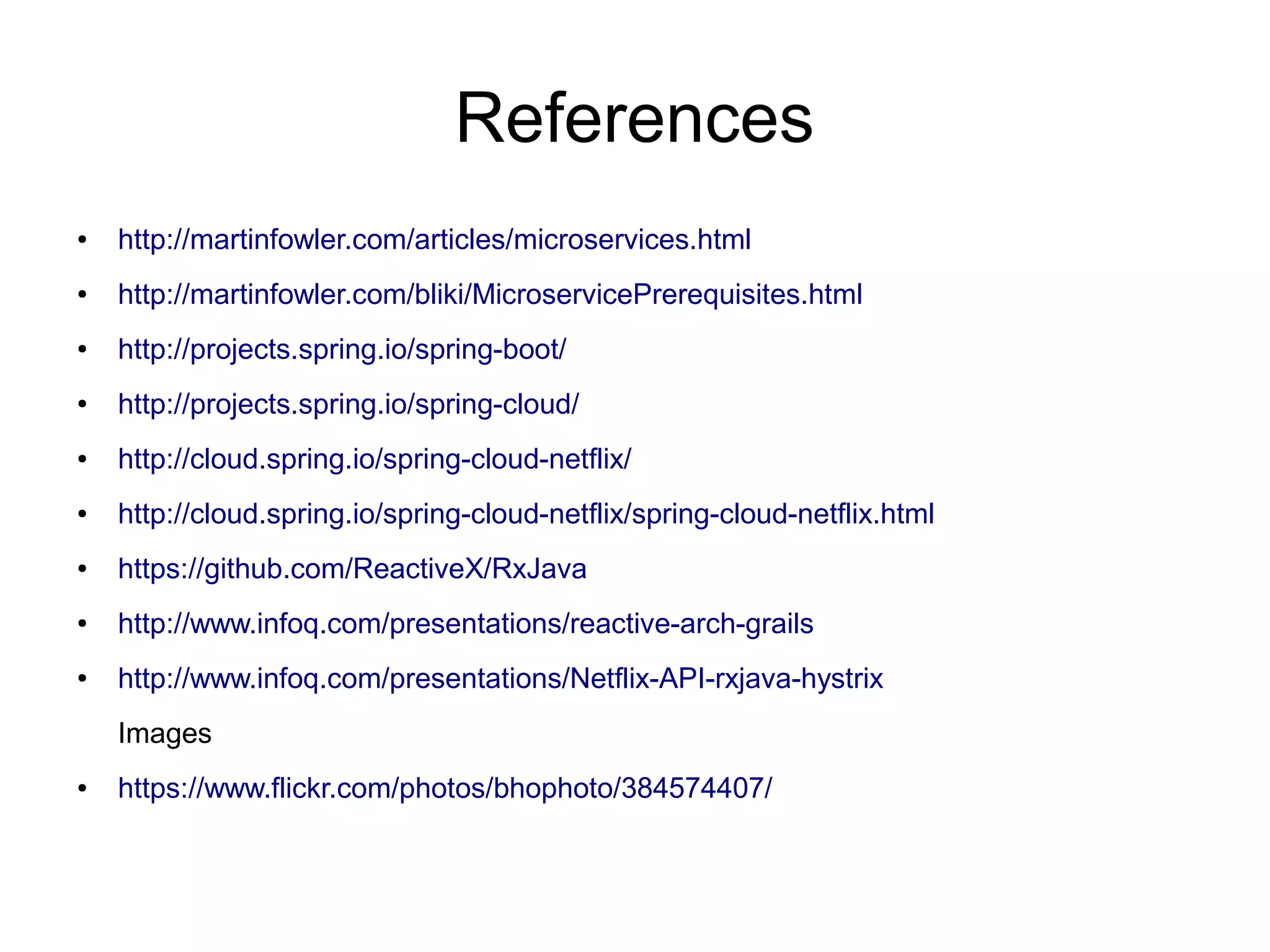This document provides an overview of microservices and how to develop them using Spring. It discusses the challenges of distributed systems and how Spring Boot and Spring Cloud Netflix address areas like configuration, service registration, load balancing, fault tolerance, and monitoring. Examples are provided for building microservices with Spring Boot, integrating configuration with Spring Cloud Config, registering services with Eureka, load balancing with Ribbon and Feign, handling faults with Hystrix, and monitoring with Hystrix Dashboard. Reactive programming with RxJava is also introduced as an approach for concurrent API integration.
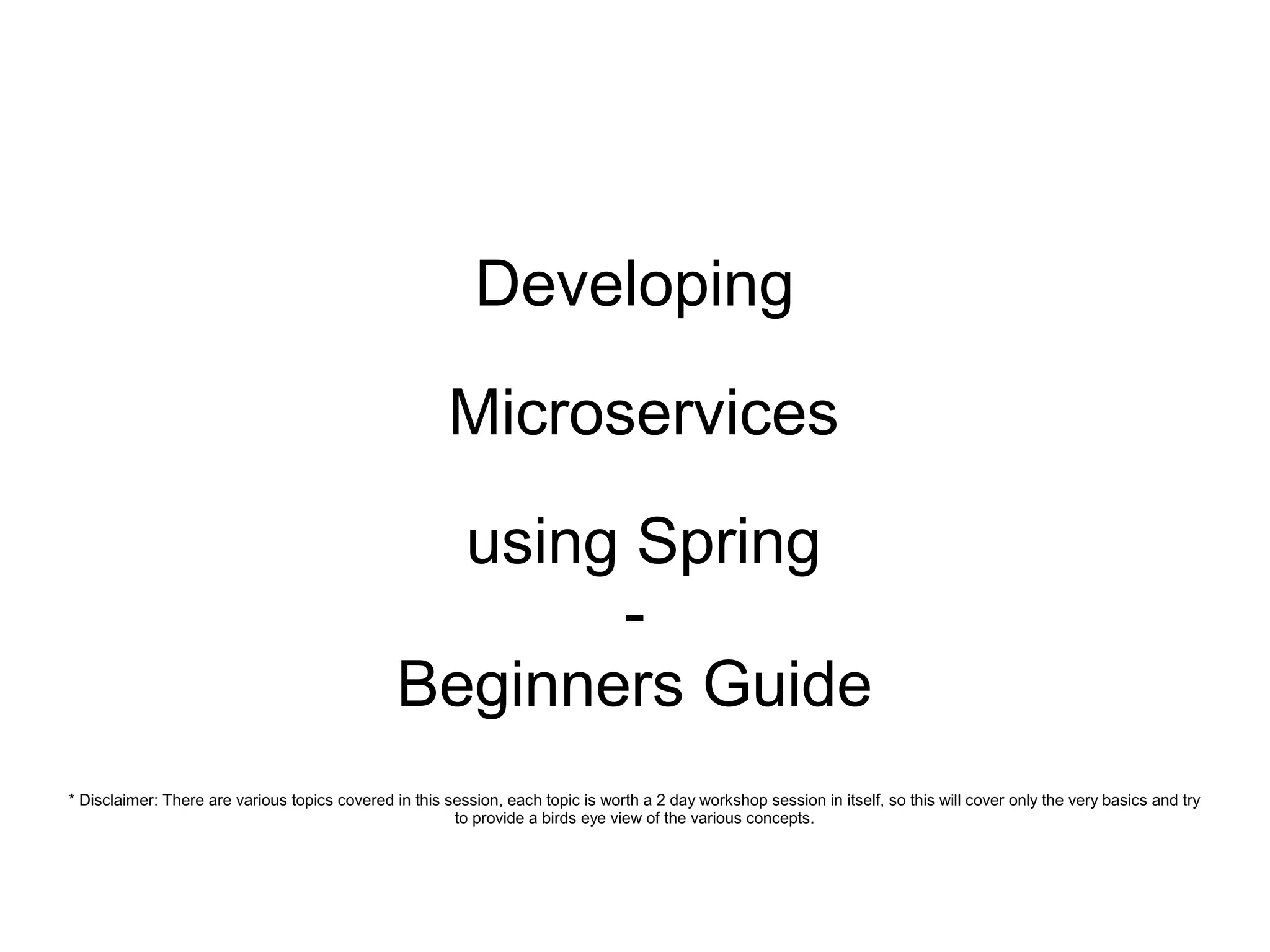
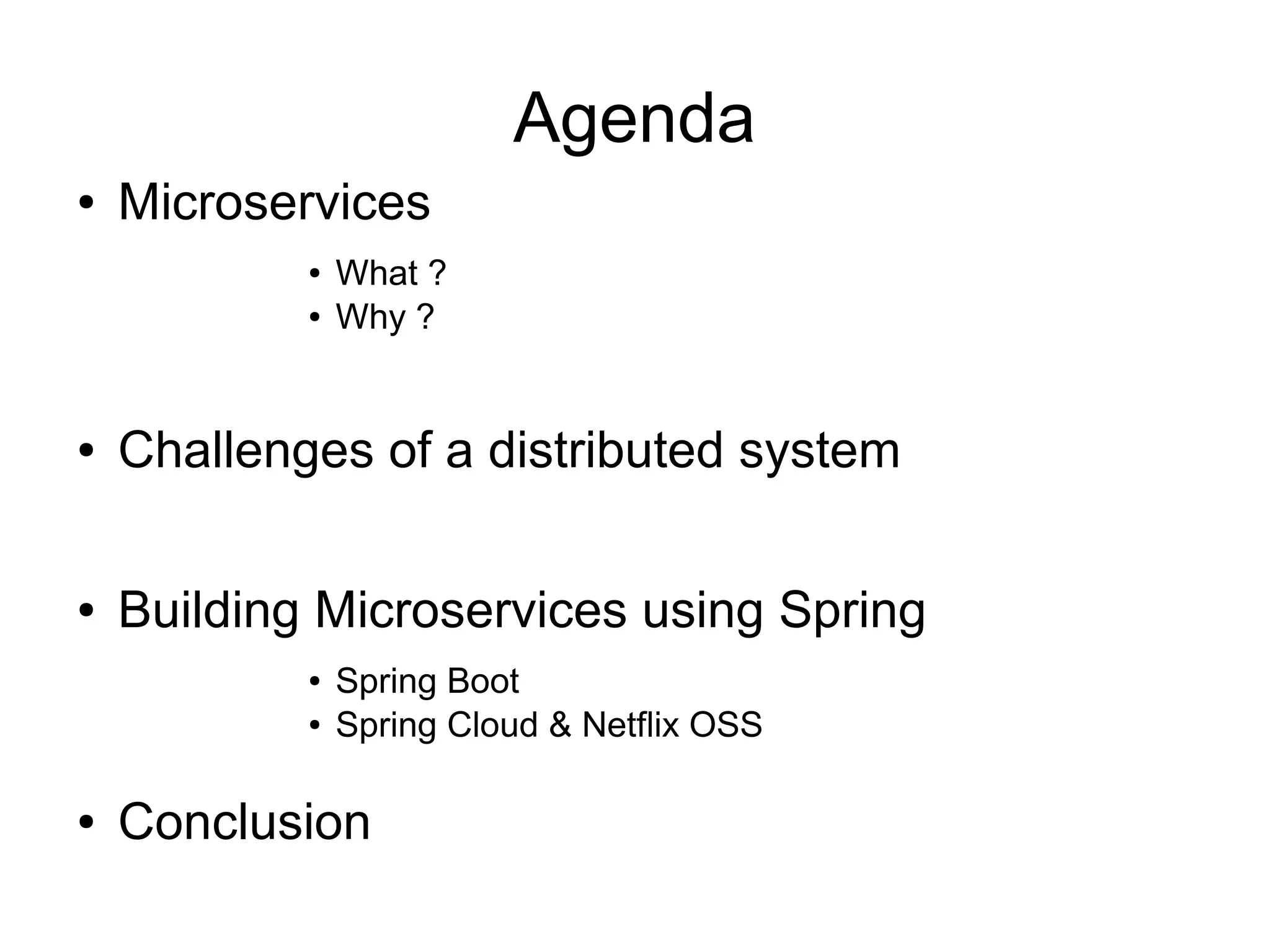
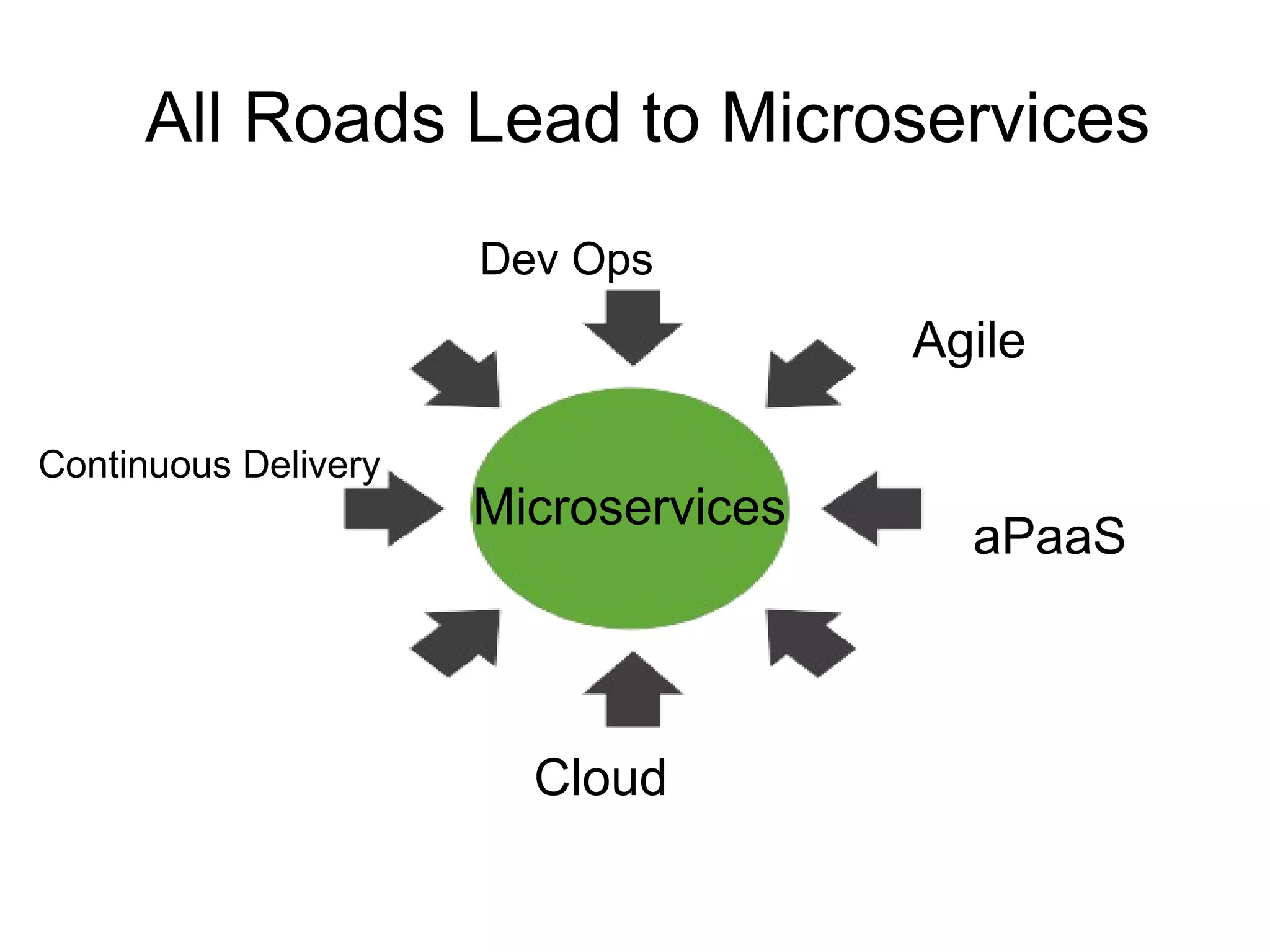
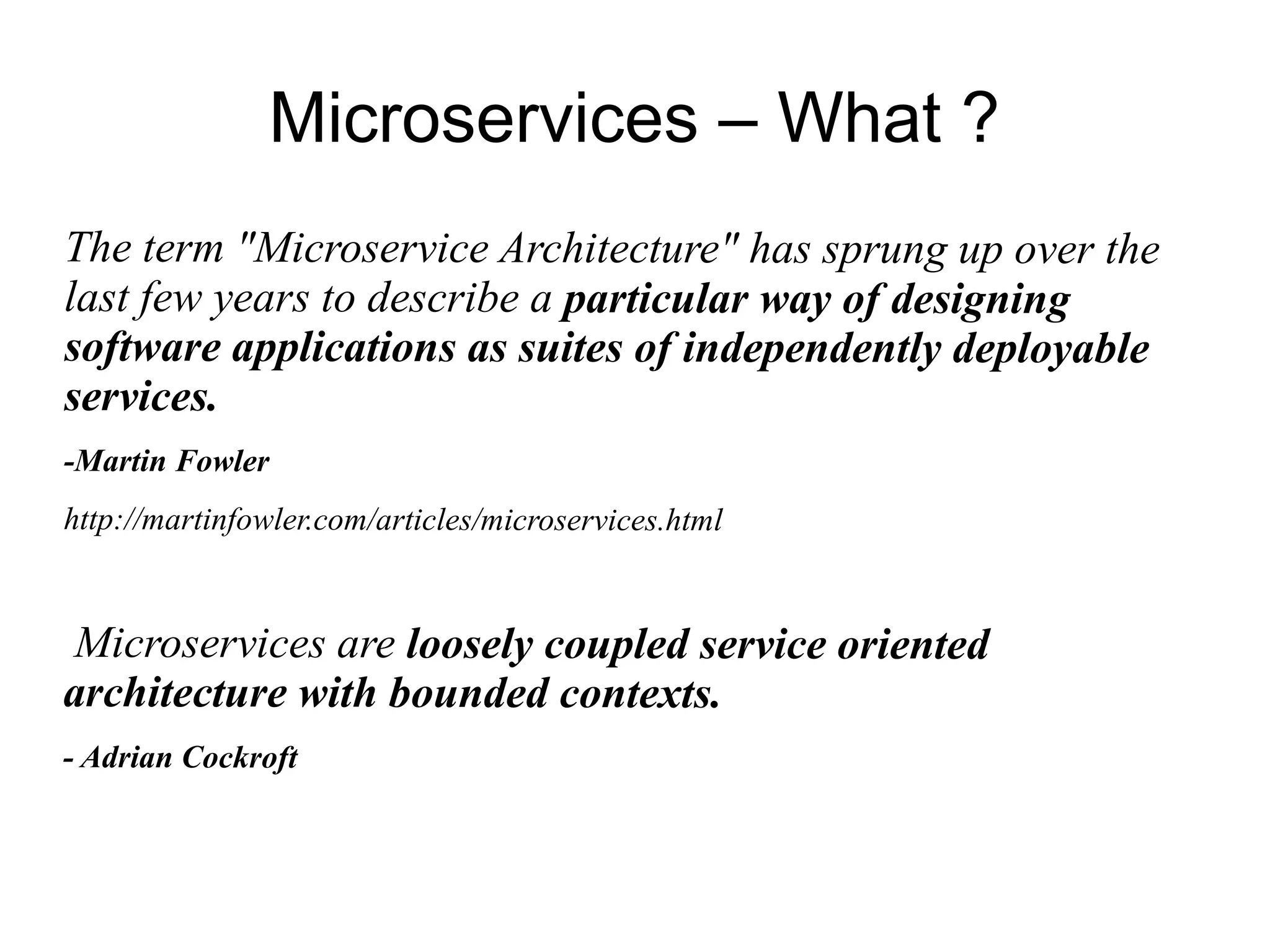
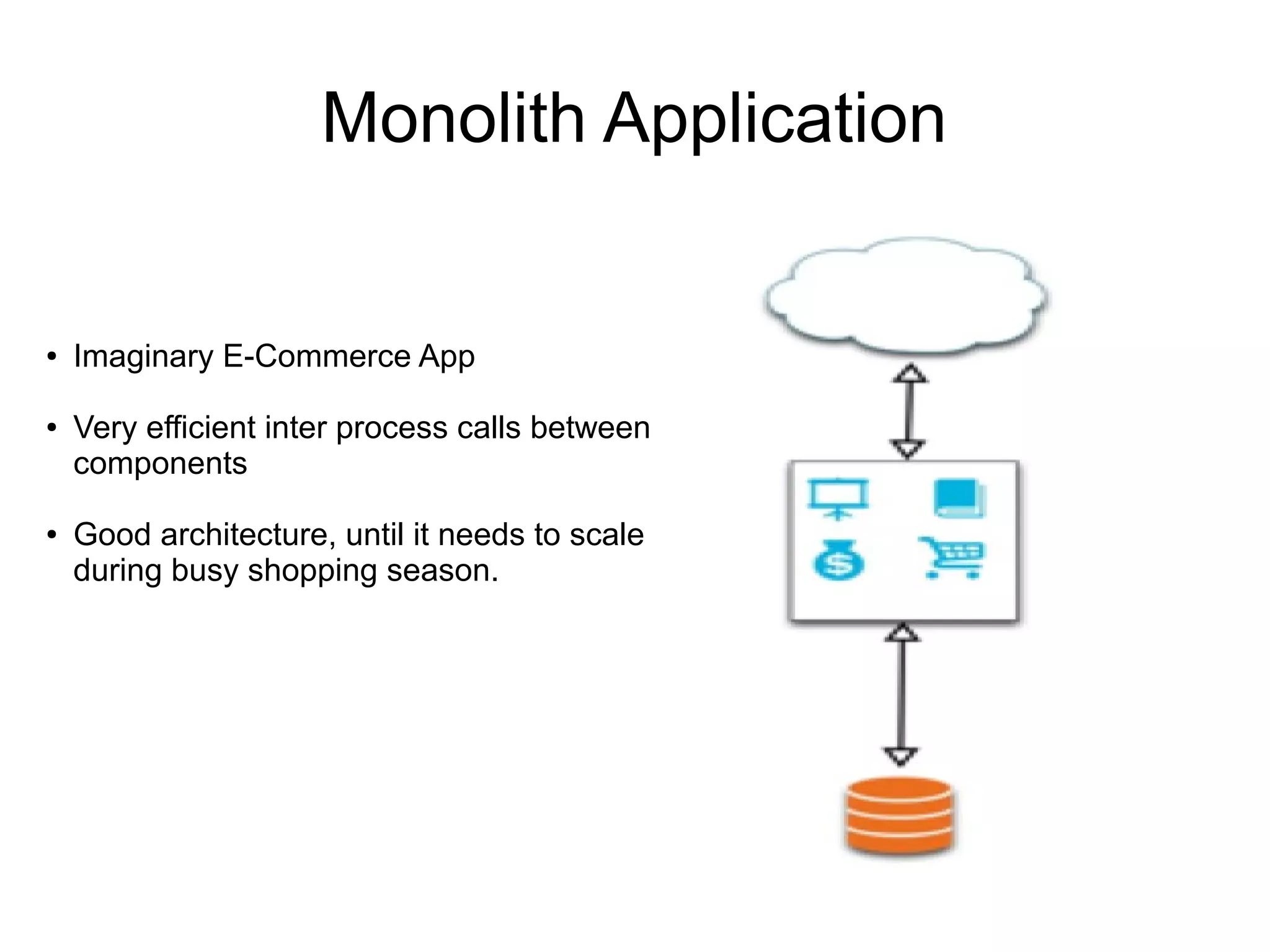
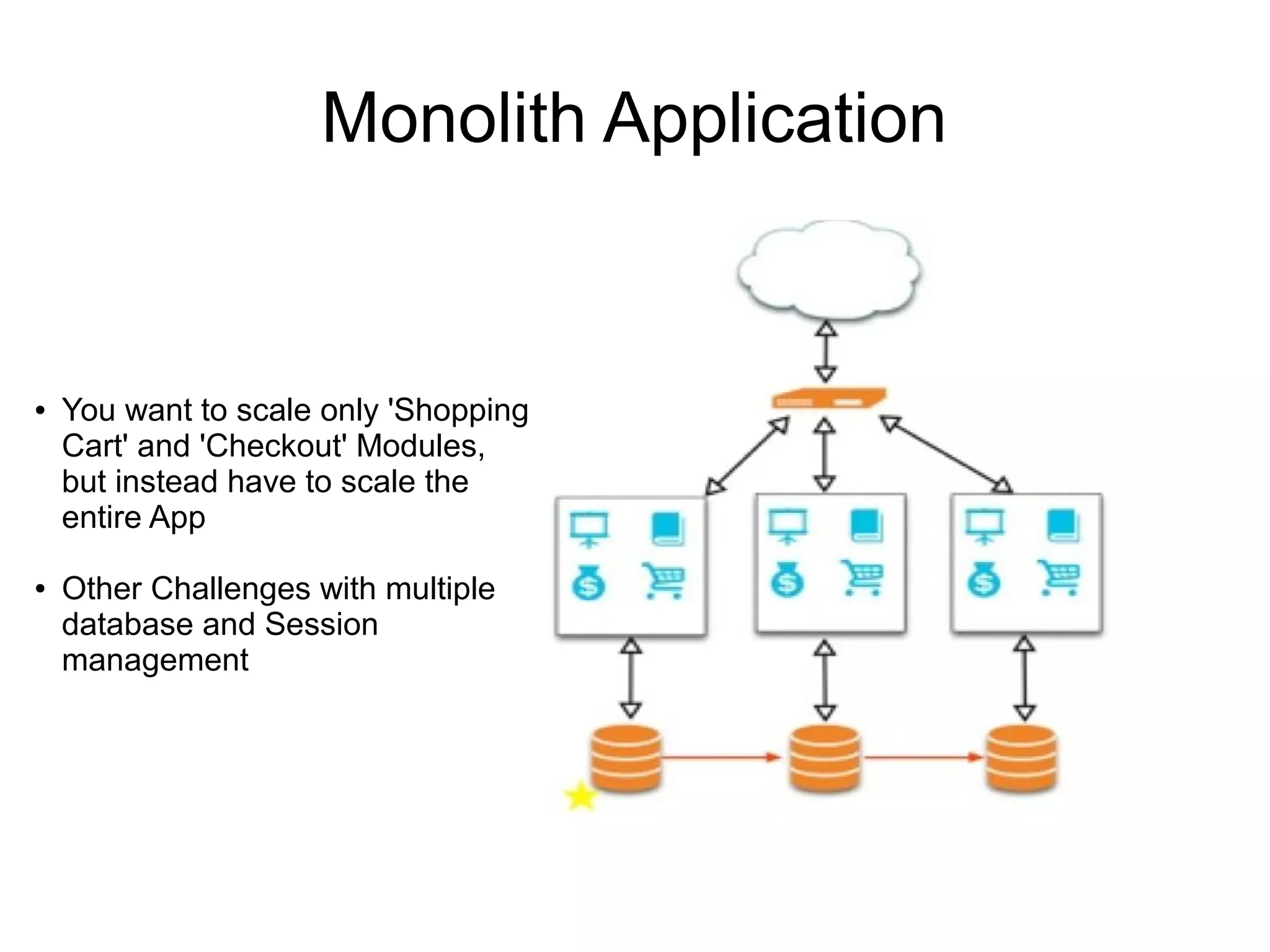
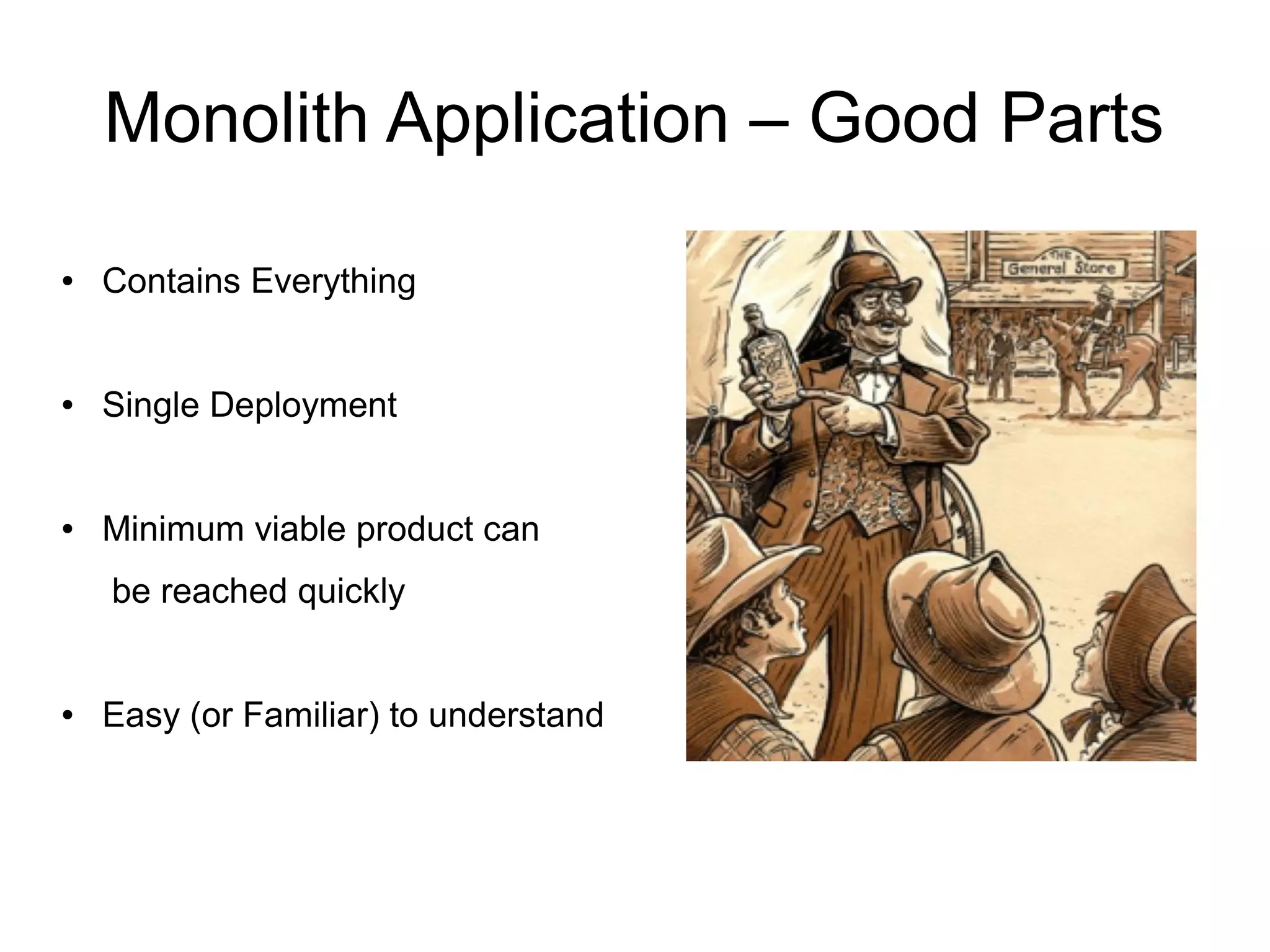
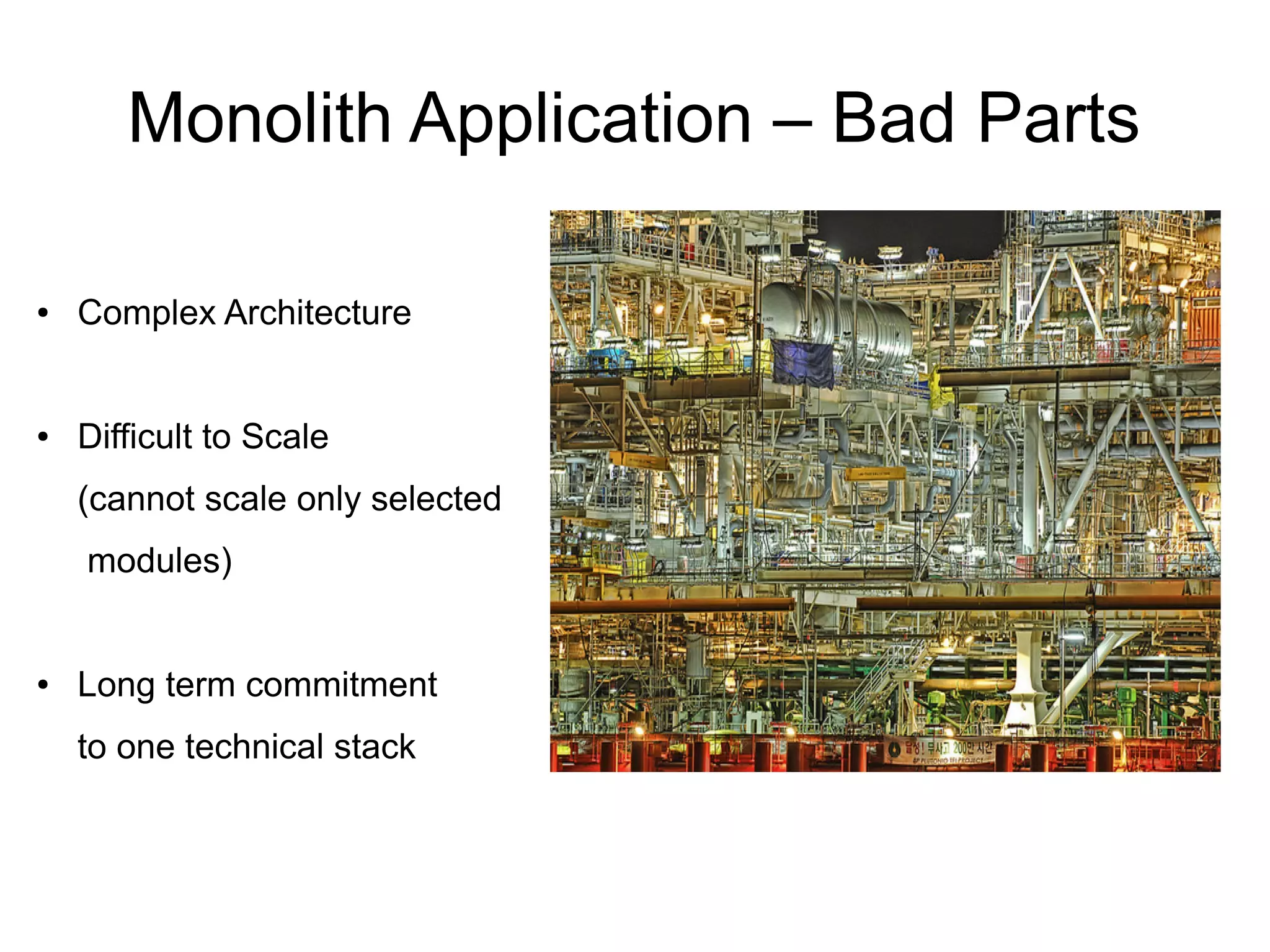
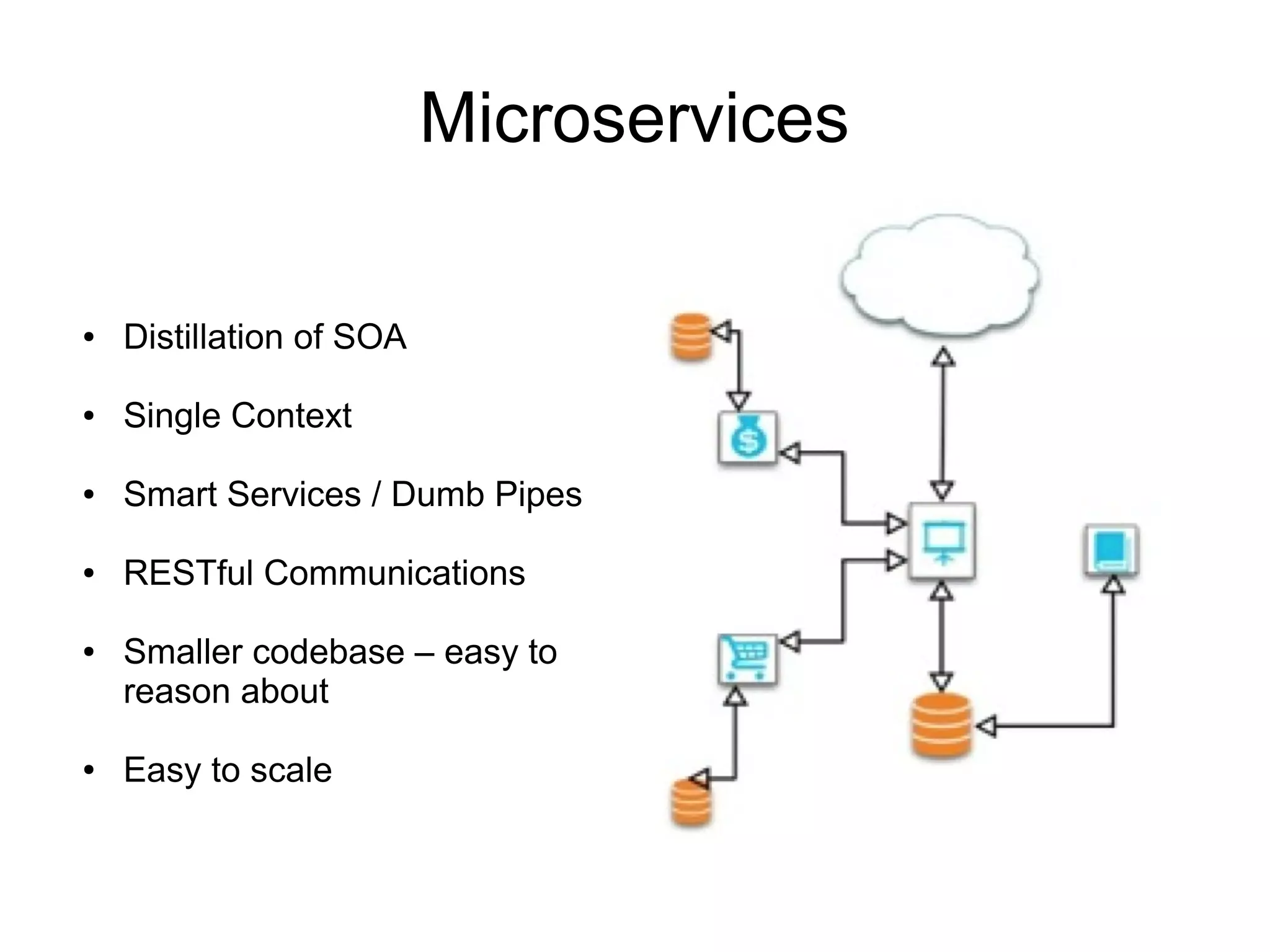
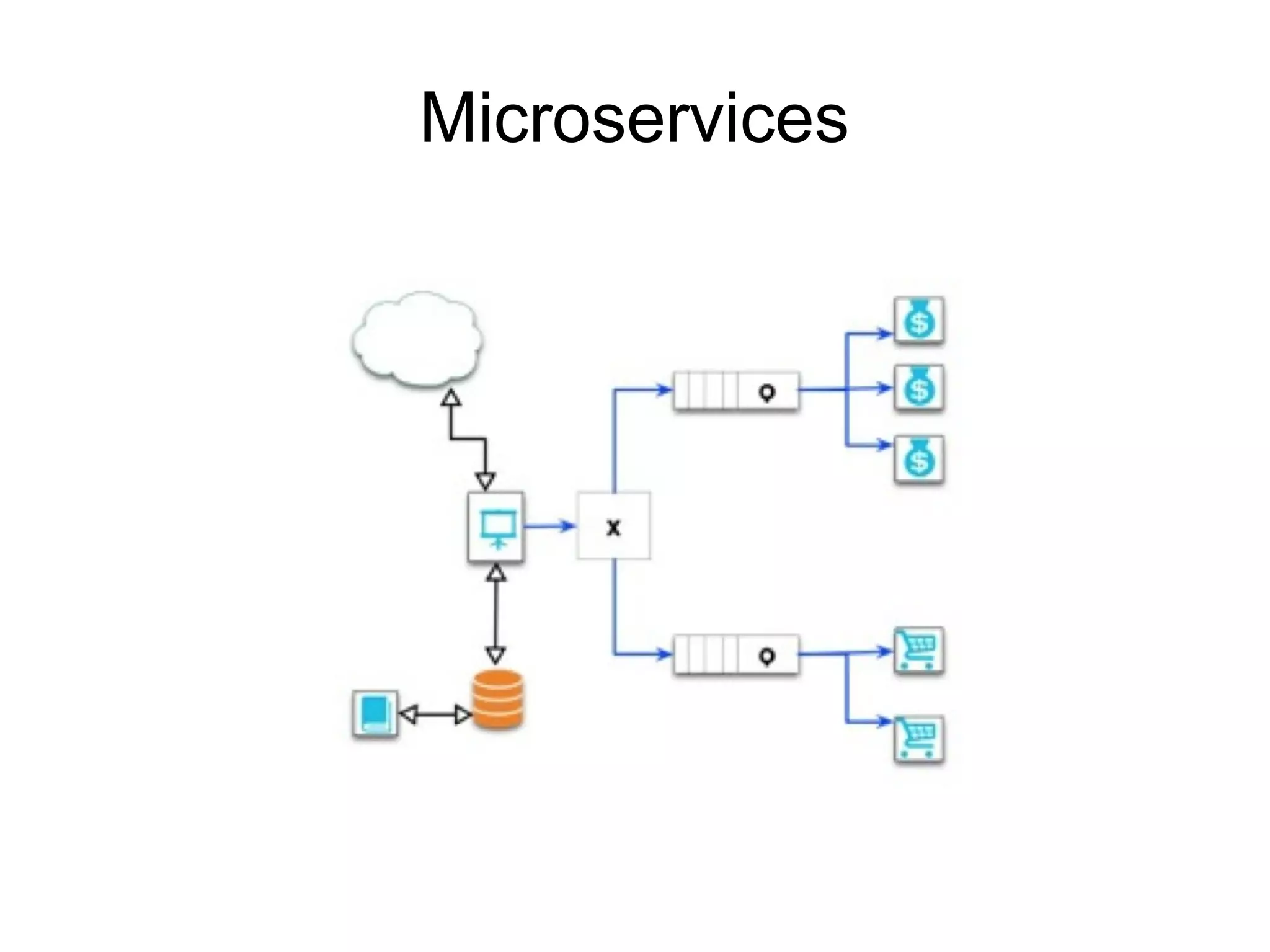
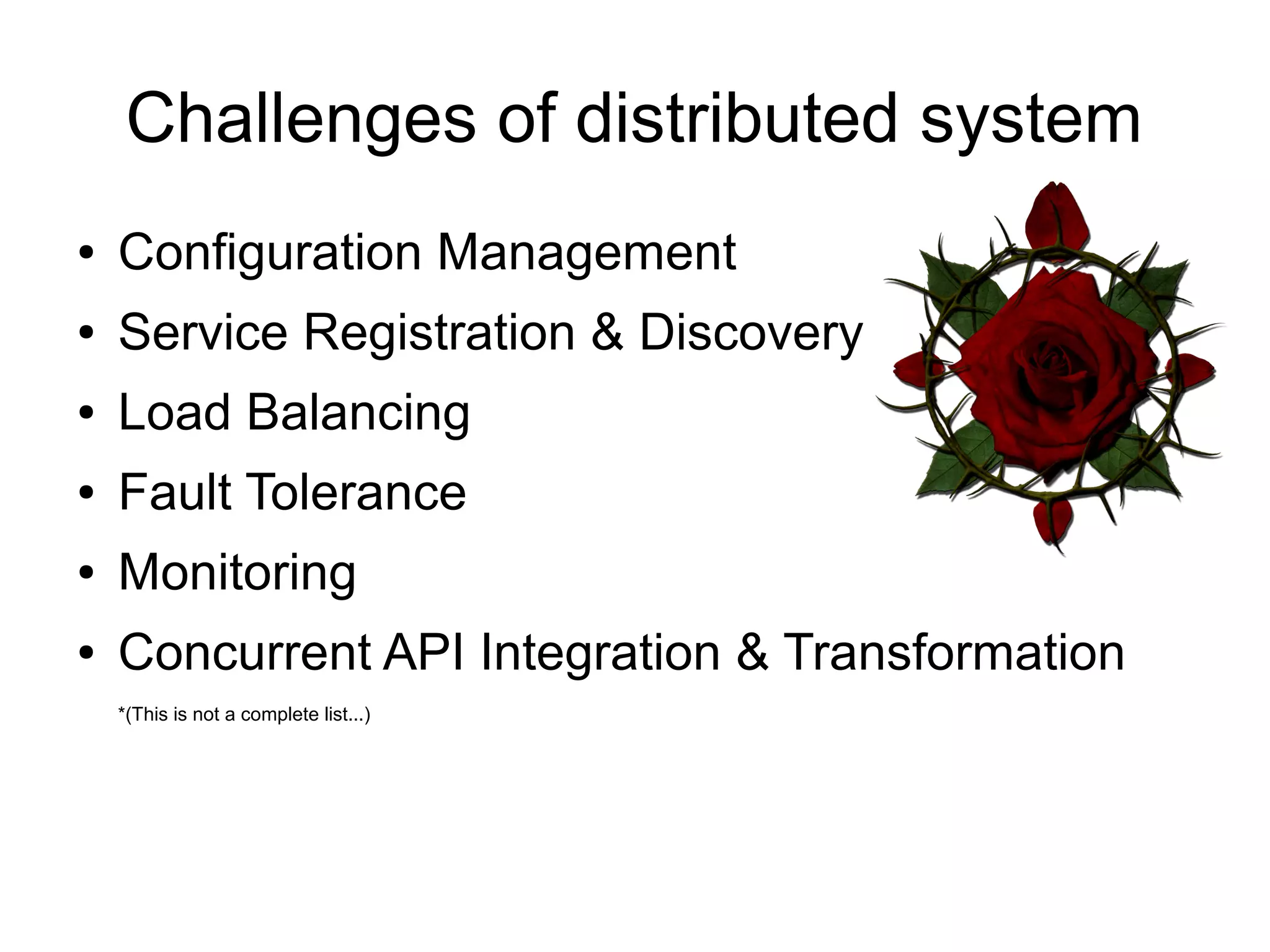
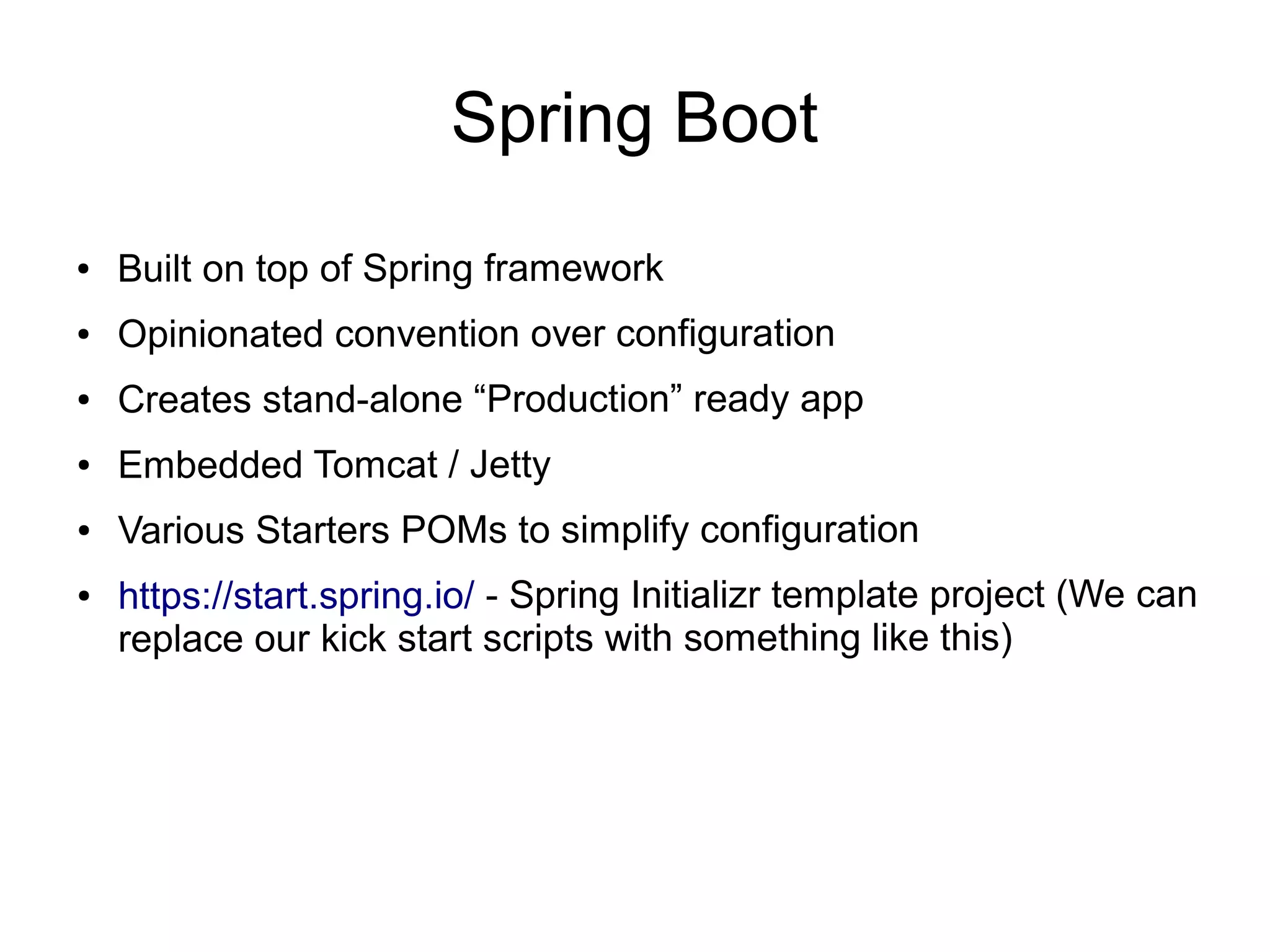
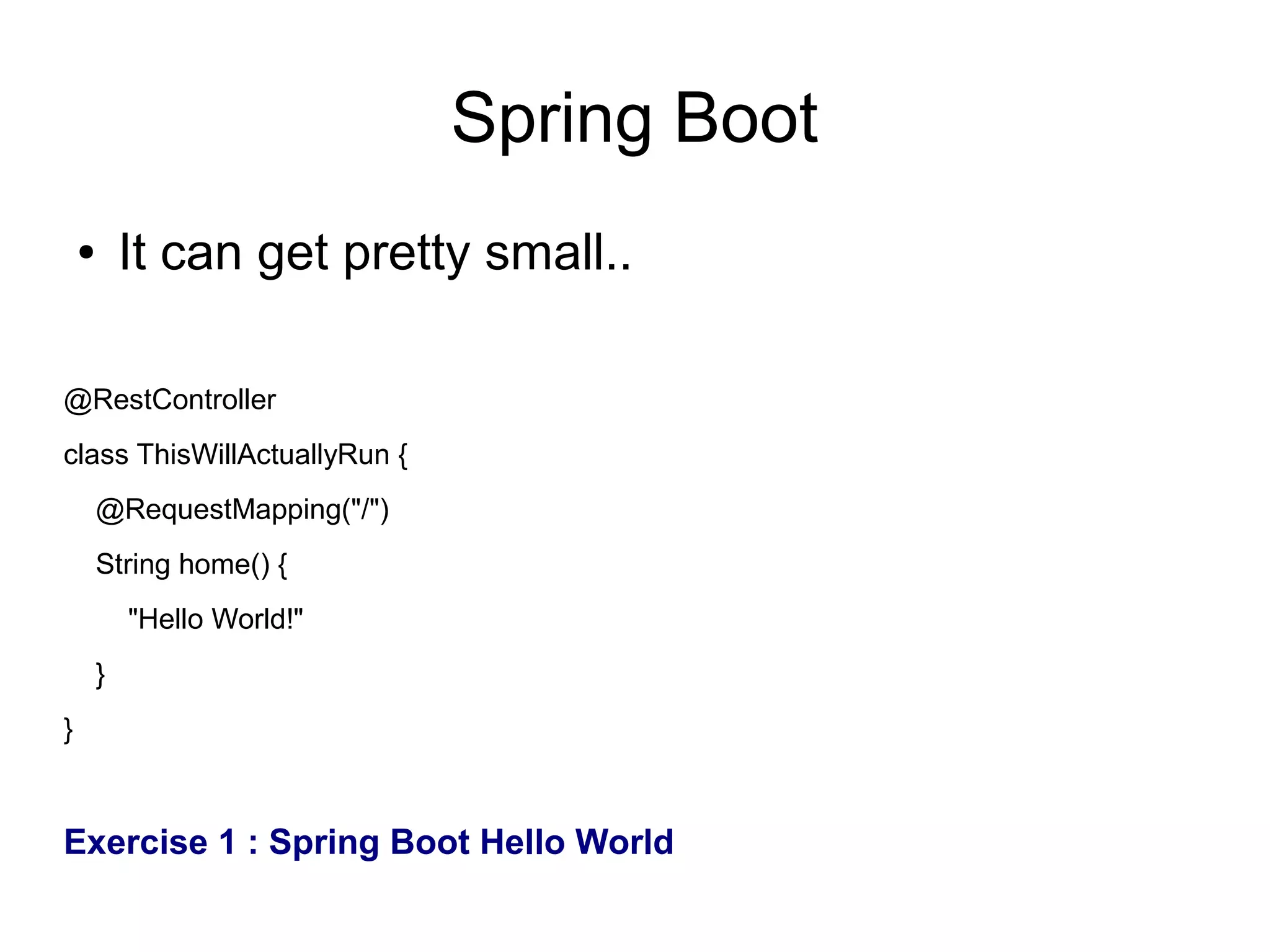
![Spring Boot
● Retrieve data from database – Spring Data REST
● Entity Class
@Entity
@Table(name="users")
public class User implements Serializable{... }
● Repository Class
@Repository
public interface UserRepository extends JpaRepository<User, Integer> { }
● Main Class
@SpringBootApplication
public class SampleDataJpaApplication {
public static void main(String[] args) throws Exception {
SpringApplication.run(SampleDataJpaApplication.class, args);
}
}
● The same project runs in local and Cloud - PWS
Exercise 2 : Spring Data REST](https://image.slidesharecdn.com/microservices-150416211811-conversion-gate01/75/Developing-Microservices-using-Spring-Beginner-s-Guide-14-2048.jpg)
